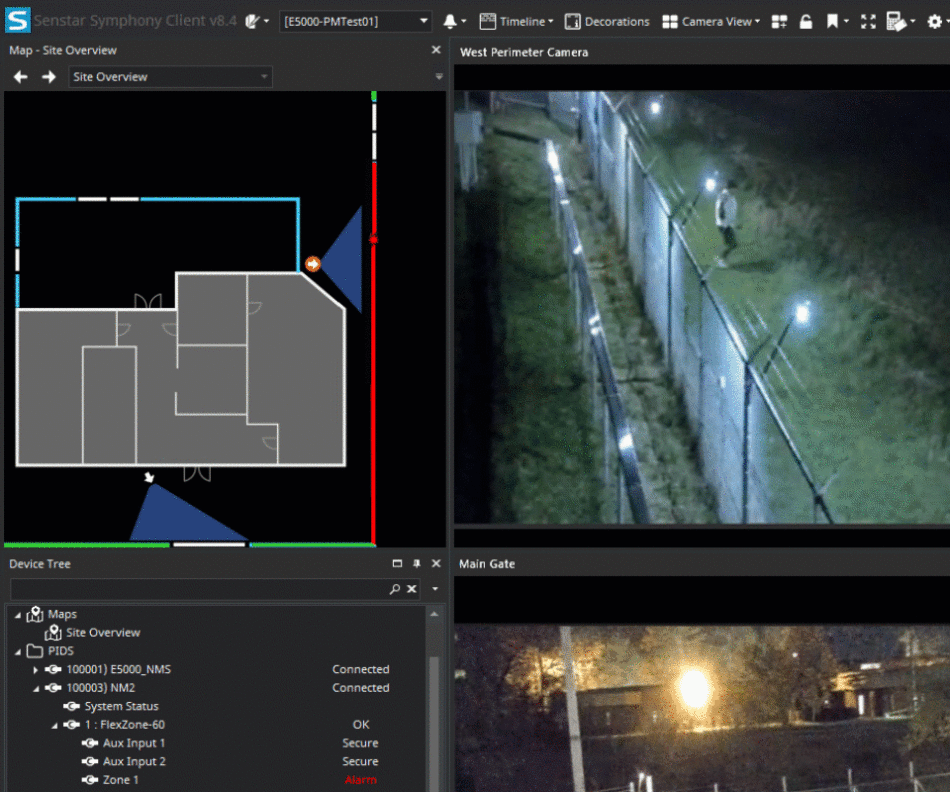What to Consider When Protecting Perimeter Gates
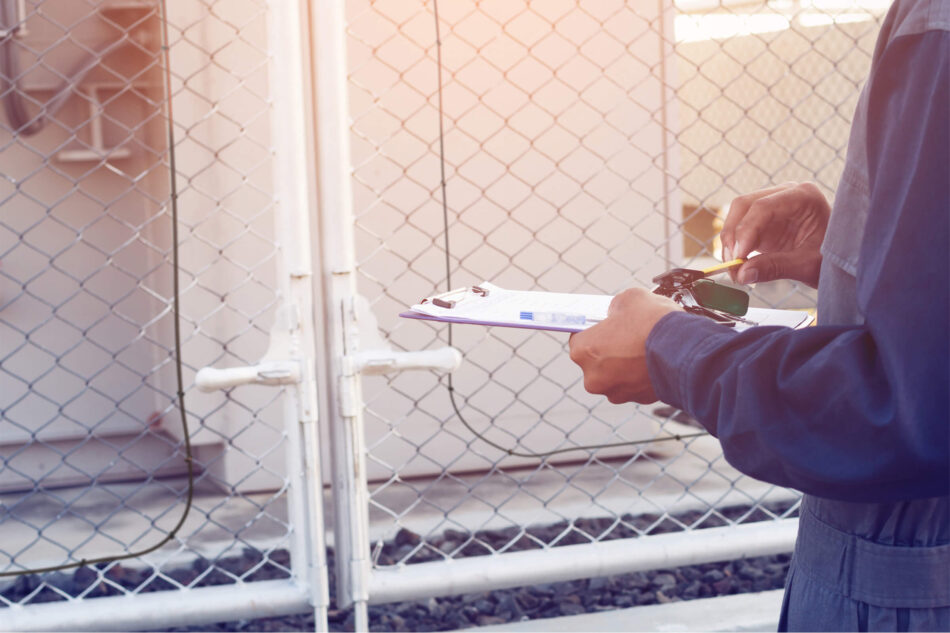
Gates and other ingress/egress points along a secured perimeter pose inherent security and operational challenges. Security systems must detect and deter unauthorized intrusions while enabling authorized people and vehicles to pass with minimal delay. To complicate matters, gates are a dynamic, moving medium (unlike static fence fabric, for example), making security sensors and cameras that monitor them inherently prone to the generation of false or nuisance alarms.
Gate activity is also part of daily business activities and processes, including the arrival and departure of cargo and shipments and employee/visitor arrivals and departures. Crime is not limited to outside business hours, so security processes need to remain in effect 24/7.
Intrusion Detection Solutions Based on Physical Gate Design
The performance of different intrusion detection sensor technologies varies based on a gate’s physical characteristics. That is why it is important to work with security professionals that can recommend solutions specific to a given site, rather than a one-size-fits-all solution.
Senstar offers multiple solutions for detecting intrusions at gates, including:
- fence-mounted guided RF, fiber optic, or accelerometer-based sensors
- wireless gate sensors
- microwave sensors
- video analytics optimized for outdoor people and vehicle tracking
Swing Gates
A swing gate moves like a traditional door, with hinges on one side. They may have one panel, common for controlling pedestrian traffic, or double panels, where the wider size is necessary to accommodate vehicles. Locking mechanisms may range from a simple chain and padlock to fully automated motorized systems.
Swing gates are easiest to protect with a fence-mounted guided RF or fiber optic sensor; the sensing cable is simply attached to each panel and trenched from one side to the other. Swing gates may also be protected with a wireless gate sensor, with one used per panel. Fence-mounted sensors are ideal for swing gates as they are cost-effective, easy to install and provide immediate detection on a closed fence during an intrusion event. Microwaves can also protect the area during both open and closed conditions, although their placement will be dictated by the direction of the swing.
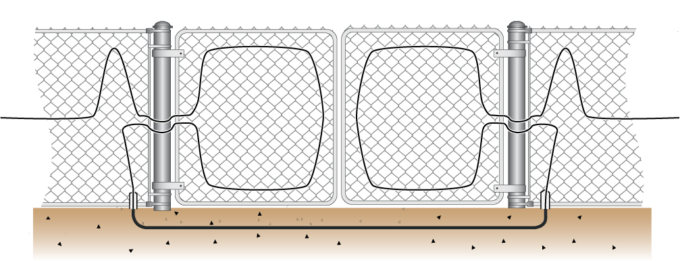
Fence sensor mounted on a double swinging gate
Slide/Cantilever Gates
Horizontal sliding gates (slide, cantilever, or rolling) are another common gate type used in security applications. They have a small footprint, making them ideal for space-constrained applications (like sallyports) and facilitate reasonably quick ingress/egress when closed.
The horizontal sliding function makes protection via cable-based sensors difficult (necessitating cable management systems) and can create on-going maintenance requirements. A better solution is an accelerometer-based wireless system, powered via solar and/or long-lasting batteries. The embedded accelerometer analyzes movement across multiple dimensions, enabling it to alarm only on intrusions and not authorized open/close events. If space allows, a pair of microwaves, mounted inside the protected area, can provide an additional layer of protection, detecting intrusions when gates are open or closed.
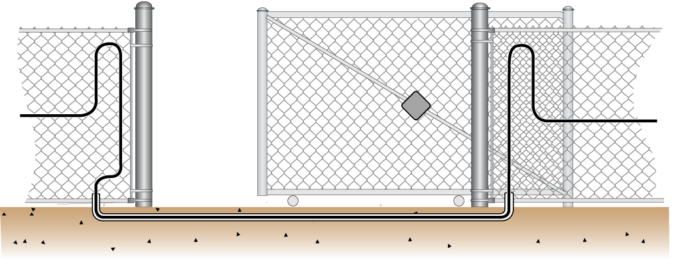
Sliding gate protected with a wireless gate sensor
Vertical Pivot Gates
A vertical pivot gate opens by rotating upwards from a bottom corner and turns 90 degrees upwards, enabling access. With respect to intrusion detection, these fence types have similar properties to swing gates, in that the rotation is limited to one dimension, and may be protected by cable, accelerometer, or microwave sensors.
Hydraulic Lift Gates
Hydraulic lift gates open and close using vertical up and down movement. Like with a slide gate, the movement mechanisms make cable-based sensors impractical, making wireless gate sensors or microwaves a better solution.
Fold Gates (Bifold or Sectional)
While not as common for perimeter security as other gate types, folding gates provide security and convenience while minimizing space requirements. As there is a wide variety of folding designs, they should be evaluated on an individual basis to determine the optimal solution.
Video Analytic Gate Solutions
Video analytics provide a different but complementary approach to monitoring gate activity. Care must be taken to select appropriate cameras with the necessary installation angle, field of view, background masking, and day/night capabilities (e.g. night vision or thermal). With respect to applying video analytic processing to the video stream, simple scene change or movement detection algorithms should be avoided in favor of newer AI-enhanced intelligent people and vehicle-aware ones, as the former may generate excessive nuisance alarms caused by fence movement or background activity.
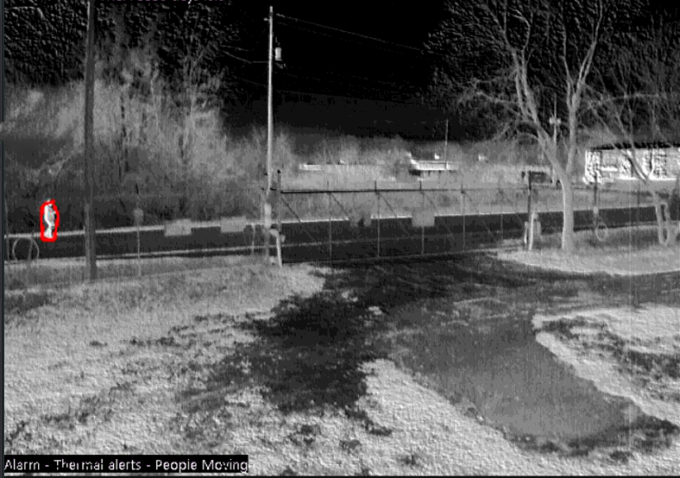
Video analytics can leverage the existing surveillance system to monitor activity at and near the gate. It they can also be used to generate key metadata for generating operational insights
Monitoring and Assessing Gate Activity
Another gate security consideration is how to track authorized activity. Typically, authorized gate activity should be tracked (and timestamped via the video surveillance system) by a monitored latch contact, while intrusion alarms detected by the gate sensors should be treated as a valid alarm with immediate notifications sent to security personnel. To avoid the generation of alarms caused by gate movement during authorized activity, gate sensors and analytics must be calibrated based on directional detection) or masked at a software level (typically via latch or access control monitoring). If the gate’s construction makes it prone to being “noisy” and generates excessive nuisance alarms, advanced technologies like Sensor Fusion can be applied specially to the gate section to dramatically reduce or eliminate nuisance alarms altogether.
Leveraging Security Data for Operational Insights
For sites with frequent gate activity operations (such as deliveries), data obtained from the fence sensors and video analytics can be leveraged to provide insight into operations. By capturing timestamped video linked to gate activity and events, operators can:
- Record inbound/outbound times of individual vehicles via Automatic License Plate Recognition (ALPR)
- Perform automated vehicle routing via the integration of workflow software
- Automate entry for authorized users (ALHR, face recognition, and access control devices)
- Implement two-way intercom systems to improve remote assessment and response capabilities


